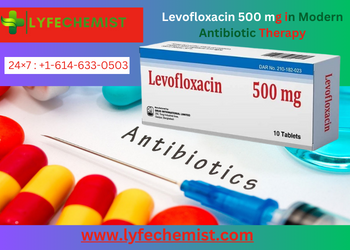
When it comes to maximizing the effectiveness of levofloxacin 500mg, timing is crucial. As a potent antibiotic used to treat a variety of bacterial infections, including respiratory tract infections, urinary tract infections, and skin infections, knowing the best time to take levofloxacin can significantly impact its absorption, distribution, and ultimately, its therapeutic outcomes.
Factors Affecting Levofloxacin Absorption
Meal Timing
The absorption of levofloxacin can be affected by the timing of meals. It is generally recommended to take levofloxacin either one hour before or two hours after meals. This timing helps to optimize its absorption in the gastrointestinal tract, as certain foods and beverages can interfere with its absorption.
Interaction with Minerals
Levofloxacin should not be taken concurrently with antacids, supplements containing calcium, magnesium, aluminum, or iron, as these can bind to levofloxacin and reduce its absorption. Therefore, it is advisable to wait at least two hours before or after taking levofloxacin to consume such products.
Timing in Relation to Other Medications
If you are taking other medications, especially those that can interact with levofloxacin, such as nonsteroidal anti-inflammatory drugs (NSAIDs) or corticosteroids, it is essential to consult with your healthcare provider regarding the optimal timing for taking levofloxacin to avoid potential interactions.
Optimal Timing for Different Conditions
Respiratory Tract Infections
For the treatment of respiratory tract infections, including pneumonia, bronchitis, and sinusitis, levofloxacin is typically administered once daily. The optimal time to take levofloxacin for these conditions may vary depending on the severity of the infection and individual factors. However, taking it at the same time each day can help maintain consistent drug levels in the body.
Urinary Tract Infections
In the case of urinary tract infections (UTIs), levofloxacin is usually prescribed for a specific duration, ranging from a few days to several weeks, depending on the severity and type of infection. It is essential to follow the prescribed dosing schedule and take levofloxacin at the recommended times to ensure effective treatment and prevent recurrence of the infection.
Skin Infections
For skin infections such as cellulitis or wound infections, levofloxacin may be prescribed either as a single daily dose or divided into two doses taken twice daily. The timing of levofloxacin administration should be consistent with the prescribed dosing schedule to achieve optimal therapeutic outcomes.
Conclusion
The best time to take levofloxacin depends on various factors, including meal timing, interactions with other medications, and the type of infection being treated. By following the guidance provided by your healthcare provider and adhering to the prescribed dosing schedule, you can maximize the effectiveness of levofloxacin treatment and promote faster recovery from bacterial infections.




